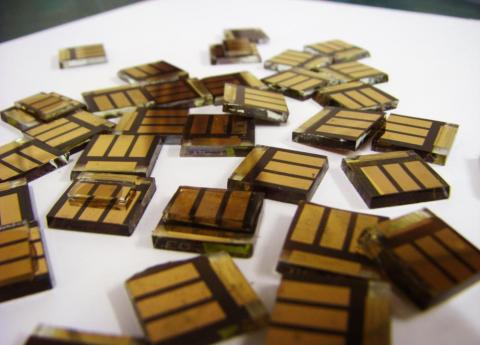Researchers at the Argonne-Northwestern Solar Energy Research Center (ANSER) have developed a way to protect perovskites from water and stabilize them against heat. By carefully growing an ultrathin layer of metal oxide on a carbon coating, the researchers made a perovskite PV device that worked even after dousing the device with a stream of water.

The researchers placed a layer of PC61BM, a carbon-based material, on top of the perovskite, which has two roles. First, PC61BM is good at extracting electrons once they are excited by sunlight. Also, the PC61BM layer protects the perovskite from water vapor, which is one of the reactants used for forming the final protective coating ' titanium dioxide.
The titanium dioxide layer was grown using atomic layer deposition (ALD), a method that deposits alternating layers of titanium and oxygen atoms. The researchers demonstrated that depositing the titanium dioxide by ALD creates a barrier with no pinholes, effectively blocking moisture from entering the film.
Only about 20 nanometers of titanium dioxide on the PC61BM were needed to protect the perovskite. On top of the titanium dioxide, aluminum electrodes were deposited and protected by a thin layer of gold.
On the opposite side of the perovskite, the team placed a nickel oxide layer that is good at extracting the positively charged holes left by the electrons. Glass, coated with a conductive film, is used as a support that allows light to pass through and a circuit to be formed.
The device held up to pure water and a temperature of 100 °C thanks to the titanium dioxide layer. 'The key challenge to commercialization of any halide perovskite-based devices is the environmental stability,' says the team. Enabling such devices to withstand water and heat is a big step towards being able to achieve perovskite-based real-world applications.

